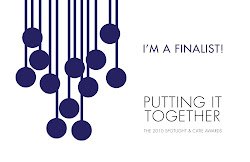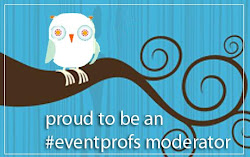The Collaborative Pitch
In the last year or so I have been pleasantly surprised at the number of conversations I have had with industry colleagues who have told me the same story: “We lost a pitch because the client wanted one thing we didn’t offer in house.” “Who won the pitch?” I’d ask. Without fail, the same response, “Another company who brought in a partner(s) to do that one other part.”
In our current economy and climate there is a palpable yearning for new ideas and big thinking for clients tired of holding back and wanting to do something. (That doesn’t mean they are spending more, just that they are ready for something else.) And at the same time there is a tremendous amount of great talent in small businesses or with very target business focuses in our industry. So the best thing a producer or designer can do on their next big pitch: harness that talent.
We have to stop the myth that one person or one company can successfully be all things to all of their clients. Maybe you can be all things for one of your clients, but you will never be all things to all of your clients. And the more you try to be all things, the more it seem you loose in the game because the margins are low or competition is stiff or because there will always be someone with another idea. Clients want to pay for value and clients will pay big if you can offer them a unique competitive advantage. But your unique advantage will always be specific, never general. So the opportunities in our industry are prime to partner and to collaborate to win that next piece of business.

How do you do that? By establishing relationships with the best talent you can at a variety of price points and personalities. Then when you are offered that next bid, create the right team to execute the best solution for the client and pitch that team, not just yourself. Let each expert shine in their capabilities and by default your chances for success will greatly increase.
The Collaborative Team
Do you remember that scene in the movie “A Beautiful Mind” from several years back when the PhD students are standing in a bar trying to compete for the attention of a beautiful woman who has just entered the bar with her friends. Then, being graduate mathematics students, they derive that if they stop competing for the one woman but each turns their attention to one of her friends, all win. That idea would go on to help the real life John Nash win a Nobel Prize in economics, but its core idea has something to say about creating events.

I have been involved in too many projects in which vendors compete to be the best client partner in order to be in control of biggest share of the client’s budget. Vendors want to be the one to own the biggest piece (or the whole pie) and disseminate the money as they see most fit. Or the more logistical application of the scenario is that most vendors do not know the other vendors involved in the project and so all show up on site with their own crews, their own lifts, their own production schedules and game plans and then conflict ensues when the décor company wants to attach a fabric swag over the productions companies speaker. Time is wasted and more importantly money is wasted.
But what if you take another approach and focus on the fact that a successfully designed and executed event is a win for you client and therefore for each of the vendors involved. As no one company can do it all, all of the time, for every client, multiple vendors will most likely always be involved. So why not build a collaborative team of vendors focused on collectively executing the best event for your client? A savvy producer or designer upon being awarded a piece of business should be able to determine the personality of their client and bring to the table the right collection of design, technical and event execution partners to meet that clients specific needs. I am making a call her for more boutique collaborative work to generate new and interesting solutions and ideas rather than general event houses who try to do everything themselves. While there is nothing wrong with one-stop event shops, I will say the most successful events I have been a part of are the ones in which the best players from a diverse range of industries or parts of the event industry come to the table to make a new thing happen.
The other component to a collaborative partnership of vendors that is crucial is for those vendors to widen their perspective beyond themselves. Too often onsite there is a mentality of “this is my job”, or a focus on only doing your piece without recognizing how their part of the event affects the other vendor partners involved. Instead installations would flow more effectively with a team approach in which all vendors understand the bigger picture and how their part relates to all of the other moving pieces. Then lines of communication can be opened. Then the decorators can help distribute the lighting equipment so they can set the dance floor or the technical team can maximize the value of the union labor call by incorporating the designers hang points into the rigging plot.

The Client’s Responsibility
Most of the issues that arise among vendors onsite at events happen because vendors are not permitted or empowered to communicate in advance of the event. Clients: introduce your vendor partners to each other and let them communicate! Doing so will only save you time, money, and aspirin onsite.
The collaborative team approach is a fun opportunity for the client to be more engaged in the process of putting together an event and the creative design elements. When you start with a collaborative team, there is more opportunity for dialogue and discussion and more chances for the client team to have input (and if your clients are like mine, I am seeing more of them wanting to be involved in the process and give a LOT of input!). However, the client must realize that a collaborative process can be a more messy process: more time is spent meeting and discussing and creating on the front end, time for idea generation and evolution is required as more players are involved, education of the goals and objectives of the event to a larger audience is required and potentially a larger audience needs the opportunity for buy in and feedback. The best thing a client can do in this situation is be a leader or empower your event designer or producer to be a leader on your behalf and manage that process, keep the team on track and the ideas driving forward to a successful event, one which will be better in the end than any one individual on the team could have created on their own.
Photo References:
http://www.thelifeworkstrategies.com/images/team.jpg
http://www.free-press-release.com/members/members_pic/200911/img/1259258333.jpg
http://androidguide.ru/img/19/194/A_Beautiful_Mind_John_Nash_Game_Theory_Scene.jpg






No comments:
Post a Comment